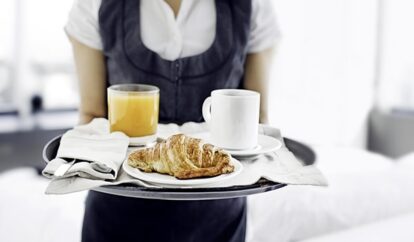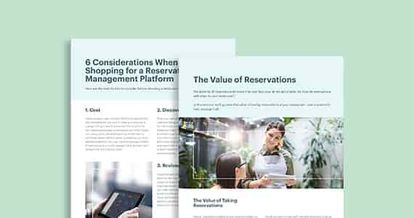Welcome to the final stage of menu development: restaurant menu engineering. You’ve calculated the prices for each menu item based on your restaurant’s ideal food cost percentage. You’ve conceptualized the design of your menu with your restaurant’s brand in mind. Now it’s time to set your menu up for profitability.
In this section, you’ll learn:
- The psychology behind restaurant menu engineering
- How layout and design affect your menu’s profitability
- Ways to apply the restaurant menu engineering process to your profitability analysis
What Is Menu Engineering?
Restaurant menu engineering is the study of the profitability and popularity of menu items and how these factors affect where you place items on a menu. Restaurant menu engineering involves both consumer psychology and profitability analysis. The goal of restaurant menu engineering is to increase the profitability per guest by strategically using design elements and placement to guide dining decisions.
The Benefits of restaurant Menu Engineering
Guests spend under two minutes looking at your menu before making a decision. You only have that long to sell to them. Using menu psychology and design elements, restaurant menu engineering influences diners to choose dishes that are high in profitability and popularity in a short amount of time. Menus that have undergone the restaurant menu engineering process can increase profits by more than 15%.
But restaurant menu engineering has many benefits beyond the potential of increasing profits. The process itself enables you to learn:
- What each menu item contributes to overall profitability
- How each menu item fits into your product mix in terms of popularity and profitability
- Which items need to be phased out, improved, or marketed differently
What is Menu Psychology?
Menu psychology refers to how diners read and make menu decisions based on:
- Placement
- Price
- Formatting
- Color
- Eye movement patterns
- Description
By leveraging the tenants of menu psychology, you can optimize your menu for profitability by manipulating these design elements to your benefit.
Layout Your Design for Profitability Using Menu Psychology
In the last section, Menu Design: Size, Layout, & Design, you employed a lot of menu psychology and engineering techniques in your design. While that section is a more comprehensive guide to menu design, we’ll describe some of the specific psychological aspects behind layout again here.
Primacy and recency theory: Studies have found that when people read a list, the first item is distinguished from previous items as important. This is known as primacy effect. That first item will then be transferred into long-term memory by the time of recall. Items at the end of the list are still in short term memory (recency effect) when the person needs to recall it.
That means, when a diner looks at a menu, they will remember the first items they see and are more likely to recall those items when they have to make a final decision. The items they see last won’t have made it into their long term memory yet. This means, they’re less likely to remember those items when they’re making a final decision.
How does this impact menu layout and design? You want your most profitable items to be the first things diners see so that those items stick out in their long term memory. That way, when the diner goes to make their final decision, they’ll be more likely to remember the profitable item. Here are some tactics for drawing attention to your high-margin menu items:
Eye magnets: When diners read a menu, they don’t actually read from page to page. They scan. Therefore, to direct the diner’s eye to your more profitable items, use eye magnets. Eye magnets are graphic techniques that redirect the diner’s eye from their natural reading pattern to a particular part of the menu.
Eye magnets include:
- Color
- Large or unique font
- Photos
- Illustrations
- Negative space
- Call-out boxes/frames
Use eye magnets sparingly in order to direct the diner’s eye, without overwhelming it.
For more information on how to use eye magnets in design, read about menu design.
Nostalgia: When nostalgia is infused into menu item titles or descriptions, consumers get sentimental and emotional about the dish and it is more likely to stand out in their mind.
Example:
Grandma’s meatloaf
Homestyle dinner rolls
Seafood macaroni and cheese: an underwater take on the ultimate comfort food. Scallops, shrimp, calamari and macaroni smothered in a decadent white cheddar sauce.
Storytelling: Telling a story in a description, when all other menu items just have ingredients allows that item to resonate in the consumer’s mind.
Example:
Mom’s Pork Chops: In 1965, our founder Jerry wouldn’t eat his broccoli but he’d have three-servings of his mom’s pork chops. Broiled to perfection, Mom’s pork chops come with whipped-cream mash potatoes, topped with mushroom gravy, portioned for “growing boys and girls”. No broccoli included.
Sensory: Using sensory descriptors like “charbroiled”, “savoury” or “buttery” evokes the reader’s senses. When a diner reads a sensory description, they imagine the taste you describe in their mind. Their decision making process is often redirected as their craving is orchestrated through the sensory description.
Example:
Coconut Curry Ramen: Homespun egg noodles in a velvety-broth, rich with layers of coconut and curry spice. Topped with sweet, honey-tossed portobello mushrooms, a soft boiled egg, green onion and a swirl of spicy sriracha.
pro tip: using nostalgia and storytelling in menu item titles and descriptions creates an emotional connection with your guest. these techniques humanize your brand. in a study by cornell university, diners chose descriptive menu items 27% more than menu choices with “normal labels”.
Negative space: Negative space (or whitespace) allows the diner’s eye to breath. Use negative space strategically around dishes you wish to stand out. With more space around a standalone dish, the more attention negative space will draw to the dish.
Item Placement:
As primacy and recency theory dictates, the first items your diner sees will be the ones they remember when it comes time to make their decision. With that in mind, always place highly profitable items first on any categorical list. Place the least profitable items last.
Golden triangle: On every menu, diners’ eye movement patterns naturally fall to a place menu engineers call “the golden triangle.” Diners first look about a third of the way down the page, then up to the right hand corner and across to the left. Menu engineers suggest that you place your most profitable items within this inverted triangle.
But eye movement patterns change depending on your menu layout.
As we discussed in Menu Design: Size, Layout, & Design, there are four basic menu design types. Each of them have their own respective areas of prime real estate. Menu engineer George Rapp famously laid out this chart:
| Menu Format | Where the Eye Falls | Where the Eye Neglects |
|---|---|---|
| Single page | Top of the page | Bottom of the page |
| Two-panel, single-fold | Top of the right side panel | Bottom left side panel |
| Three-panel, two-fold | Top of the third panel | Bottom of the first panel |
| Many panel booklet | Top of each page | Bottom of each page |
Now that you know where diners are looking, how do you determine which menu items should populate these sweet spots?
Menu Item Classification Quadrant
To determine where menu items should fall, (and which ones are worthy of placing in your golden triangle, call-out boxes, and drawing attention to using other eye magnets) you must categorize menu items according to profit and popularity levels.
We’ll describe how to do this in the next section, but first let’s look at the potential categories your menu items can fall into:
- Stars: High profitability and highly popular. (These are the items you’ll want to highlight using eye magnets and prime placement on your menu.)
- Plow-horses: Low profitability but highly popular. (Experiment with the price of these items to improve their profitability by using add-ons to increase your profits.)
- Puzzles: Low popularity, but highly profitable. (Tweak their recipe or finesse the way they’re marketed to appeal to more customers.)
- Dogs: Low profitability and low popularity. (You should avoid any special emphasis of these on your menu and consider replacing the items if your efforts have been exhausted.)
Restaurant Menu Engineering Process
Now comes the tricky part: how do you determine which menu item falls into which category?
In our section on How to Price Your Restaurant’s Menu, you determined your menu prices using a food cost percentage based on your ideal profits and overhead. Since you’ve done this, you’ve already set yourself up for ideal margins.
The next step is to determine the revenue each dish contributes to your bottom line.
pro tip: modern pos systems give you the ability to draw sales analytics from past and current performance, which simplifies this process significantly.
Step one: Determine contribution margins
As we mentioned before, food cost percentage isn’t the only indicator of a menu item’s success. Your contribution margin is equally as important.
Contribution Margin: The contribution margin is the difference between the menu item’s selling price and its food portion cost.
As a formula, this is expressed as:
Contribution margin = Selling price – Portion cost.
Profitable menus (and profitable restaurants) don’t just keep food cost percentages low, they keep contribution margins high.
Step two: Analyze menu items for profitability and popularity
You won’t be able to gauge the popularity of your menu items until you’re up and running, so for now you’ll have to operate on assumptions and estimations.
To determine potential profitability:
Pre-cost every item on the menu under ideal conditions, assuming portions are controlled and all the portions you have on hand will be sold. (We explain how to cost out each menu item in How to Price Your Restaurant’s Menu.)
To determine expected popularity:
Expected popularity is also referred to as the “predicted menu mix” or “sales mix”.
Use the formula:
Expected popularity = 100% / (Number of expected menu items)
For example: (Using data from the chart below)
Expected popularity = 1 / 4 menu items
= 0.25
= 18% is the expected popularity.
Menu analysis principles assume that popular items have sales of 70% or more of the expected popularity. Thus, the menu item would have to have a contribution margin percent of over 18% to be considered popular.
[We arrived at 18% by multiplying the expected popularity (50% or 0.5) by the popularity benchmark (70% or 0.7).]
pro tip: keep this template on hand. it sets out the key metrics you need in order to log contribution margins and analyze profitability.
| Menu Item | Total Items Sold | Menu Price | Portion Cost | Food Cost % | Portion Contribution Margin | Total Food Sales | Total Food Cost | Total Contribution Margin | Contribution Margin % (% of total contribution from all menu items.) | Classification |
|---|---|---|---|---|---|---|---|---|---|---|
| Spaghetti and meatballs | 16 | $15.67 | $5.17 | 33% | $10.50 | $250.72 | $82.72 | $168 | 53% | STAR |
| Vegetarian Rigatoni | 2 | $12 | $5 | 42% | $7.00 | $24.00 | $10.00 | $14 | 4% | DOG |
| Seafood linguini | 10 | $18 | $9 | 50% | $9.00 | $180.00 | $90.00 | $90 | 28% | PLOW HORSE |
| Three cheese tortellini | 5 | $12 | $3 | 25% | $9.00 | $60.00 | $15.00 | $45 | 14% | PUZZLE |
| TOTAL | 33 | $57.67 | $22.17 | $35.50 | $514.72 | $197.72 | $317 |
How can you use this spreadsheet to categorize menu items?
Stars (High popularity, high profitability):
- High “total items sold”
- High sales
- High contribution margin
- High contribution margin %
E.g. Spaghetti and meatballs:
- High “total items sold”: 16 / 33 items sold
- High sales: $250.72 / $514.72
- High contribution margin: $168 / $317
- High contribution margin 53%
Plow-horses (Low profitability, highly popular):
- High total items sold
- High food cost %
- Moderate contribution margin
- Moderate contribution margin %
E.g. Seafood Linguini
- High total items sold: 10 / 33 items sold
- High food cost %: 50%
- Low contribution margin: 90 / 317
- Low contribution margin %: 28%
Puzzles (Low popularity, high profitability)
- Low total items sold
- High portion contribution profit margin
E.g. Three Cheese Tortellini
- Lower total items sold: 5 / 33 items sold
- Low contribution margin percent: 14%
- High contribution margin per item: $9 per plate
- Low food cost percentage: 25%
Dogs (Low profitability, low popularity):
- Low sales
- Low portion contribution margins
- Low total contribution margins
- High food cost percentage
E.g. Vegetarian Rigatoni
- Low item sales: 5 / 33 items sold
- Low contribution margin: $14 / $317
- Low contribution margin %: 4%
- High food cost percentage: 42%
What do you do with this information?
Stars (High popularity, high profitability):
- Keep them on your menu.
- Don’t change the quality or recipe.
- Feature the item in a prominent location. Depending on the menu format you use, place the item on the top of the page or in the golden triangle.
- Direct serving staff to use suggestive selling.
Plow horses (Low profitability, highly popularity):
Your challenge: Increase contribution margin, without reducing popularity.
Strategies:
- Consider increasing the price gradually and carefully.
- Or reduce the food cost carefully without compromising the dish’s selling features. Consider reducing cost by using less costly ingredients for side dishes or by reducing the portion size.
- Reposition the menu item to a less prominent position or remove any eye magnets associated with this item.
Puzzles (Low popularity, high profitability):
Your challenge: Increase the popularity of the dish, without increasing the food cost percentage.
Strategies:
- Reposition the item on the menu to a prominent position
- Use eye magnets to attract diners eyes to that dish
- Direct servers to use suggestive selling or offer as a featured dish
- Re-work the description using enticing descriptors
Dogs (Low profitability, low popularity):
Your challenge: Determine whether these items should be cut or kept.
Strategies:
- Consider gradually removing these items from the menu, unless they reuse ingredients from other dishes and are not labor intensive.
- If you don’t want to remove them completely, move them to a low-rent space on your menu, like the bottom of the page or last on a list of categories. Use the Item Placement Chart and the “Where the Eye Neglects” column to help you.
pro tip: as we discussed in how to price your restaurant’s menu, if you find that your food costs are running high one month or that you have excess inventory due to a lack of sales, run specials using new recipes or existing menu items that have high profit margins.
Conclusion
Like all things menu-related, restaurant menu engineering is an art and a science. Your menu should be living and breathing, but at the same time, avoid shocking guests by constantly altering the menu prices or product mix. In following these steps, consulting restaurant experts and always keeping profitability top of mind, you’ll create an agile menu designed for aesthetics, functionality and, of course, profitability.
Sign up for our free weekly TouchBistro Newsletter





